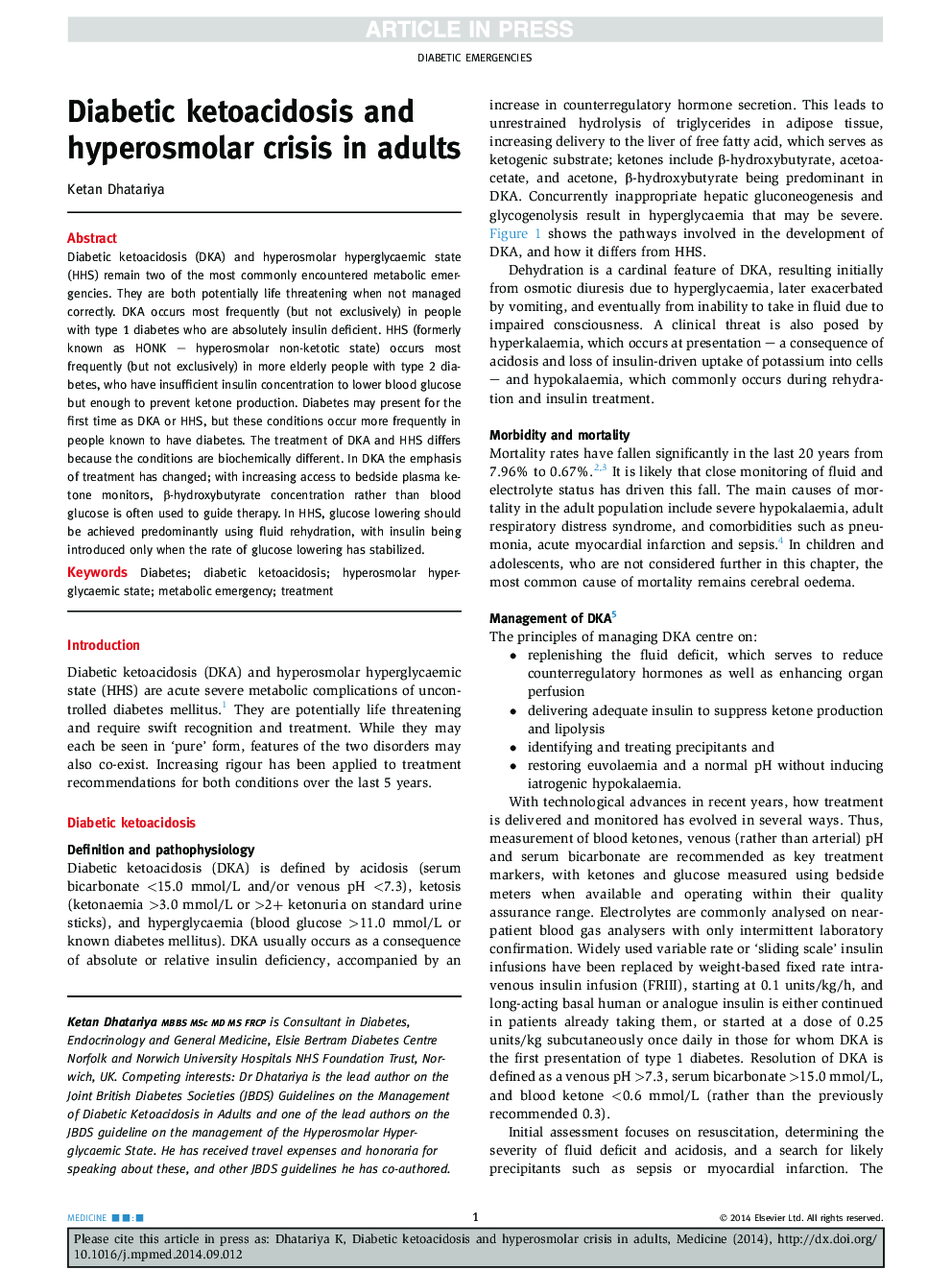| Article ID | Journal | Published Year | Pages | File Type |
|---|---|---|---|---|
| 6152016 | Medicine | 2014 | 4 Pages |
Abstract
Diabetic ketoacidosis (DKA) and hyperosmolar hyperglycaemic state (HHS) remain two of the most commonly encountered metabolic emergencies. They are both potentially life threatening when not managed correctly. DKA occurs most frequently (but not exclusively) in people with type 1 diabetes who are absolutely insulin deficient. HHS (formerly known as HONK - hyperosmolar non-ketotic state) occurs most frequently (but not exclusively) in more elderly people with type 2 diabetes, who have insufficient insulin concentration to lower blood glucose but enough to prevent ketone production. Diabetes may present for the first time as DKA or HHS, but these conditions occur more frequently in people known to have diabetes. The treatment of DKA and HHS differs because the conditions are biochemically different. In DKA the emphasis of treatment has changed; with increasing access to bedside plasma ketone monitors, β-hydroxybutyrate concentration rather than blood glucose is often used to guide therapy. In HHS, glucose lowering should be achieved predominantly using fluid rehydration, with insulin being introduced only when the rate of glucose lowering has stabilized.
Related Topics
Health Sciences
Medicine and Dentistry
Medicine and Dentistry (General)
Authors
Ketan Dhatariya,
